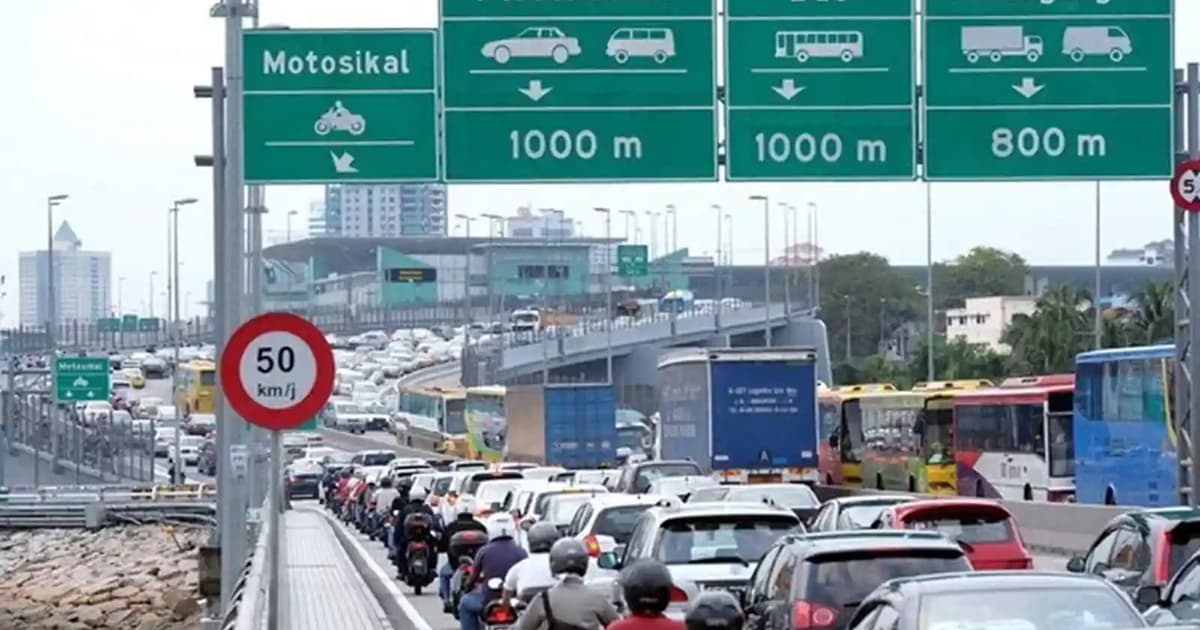
Two transport consultants have urged the government to work with Singapore to expand and modernise the bilateral Cross-Border Taxi Scheme (CBTS) for better connectivity between Johor Bahru and the island republic.
Wan Agyl Wan Hassan and Rosli Azad Khan pointed out that the existing CBTS is underutilised.
Both were responding to a call by a Dewan Rakyat backbencher for Singapore to lift the ban on e-hailing rides from Johor Bahru.
They said that the CBTS was limited in terms of reach and user experience, with only 200 licensed cabs permitted from each country, operating with fixed single pick-up and drop-off points — Larkin Sentral in Johor Bahru and Ban San Street Terminal in Singapore.

Rosli said both authorities should look into improving the system and adding more pick-up and drop-off points for the convenience of passengers.
He also said that more buses should be made available from both sides of the causeway as travel via taxi or even e-hailing is too expensive for daily commute.
He noted that there are no buses or taxis from either side serving the second crossing, known as the Tuas Second Link, used for travel to the western and southern parts of Johor or further north into Malaysia.
“Commuters have to travel all the way to Johor Bahru to cross to Singapore (via the causeway). No one talks about this bigger issue and problems faced by those who live on the western side of Johor Bahru,” he said.

Wan Agyl, founder of transport think tank My Mobility Vision, said the most workable short-term solution is to modernise the CBTS, run a controlled bilateral e-hailing pilot programme, and then scale up if the initiative is proven safe and beneficial.
“This ensures the service meets commuter needs without eroding licensed operators’ livelihoods or creating (the need for) new enforcement,” Wan Agyl said.
The same phased model mirrors what other busy border cities like Hong Kong-Shenzhen, in China, have done to expand services without destabilising existing operators.
Wan Agyl said that in high-volume border cities like San Diego-Tijuana, authorities have modernised taxi schemes by integrating them with ride-hailing apps and adding multiple designated pick-up points.
“This kind of reform paired with a sandbox for licensed cross-border e-hailing is more realistic than expecting the CBTS in its current form to meet growing demand, especially once the Rapid Transit System Link opens in late 2026.

Tebrau MP Jimmy Puah had urged the government to hold talks with Singapore to lift the ban on e-hailing rides to the island state from Johor Baru, saying that the decision to restrict such rides hurt frequent commuters.
He added that many Johoreans preferred to fly out from Changi Airport when travelling overseas, with a typical ride from Johor Bahru to the Singapore airport taking only about an hour if the causeway is clear.
Puah also proposed that certain conditions be set to enable e-hailing rides to Singapore. Among these were restricting drop-offs to airports and ferry terminals and limiting them to Malaysians or foreign residents in Malaysia.
More than tighter conditions needed
Wan Agyl said limiting drop offs to high-volume transport hubs like Changi Airport and ferry terminals help manage congestion and address jurisdictional and insurance issues, but that on their own, setting these conditions are insufficient for long-term viability for overall connectivity.
“To succeed, these conditions must be paired with reciprocal driver licensing, mandatory cross-border commercial insurance, and digital booking verification,” he said.
He also suggested geofenced pick-up and drop-off zones to manage congestion at key points as well as fixing service quotas to prevent market flooding and protect existing taxi operators during transition.
Both governments should also share trip data for enforcement, congestion management, and future policy design, he added.






